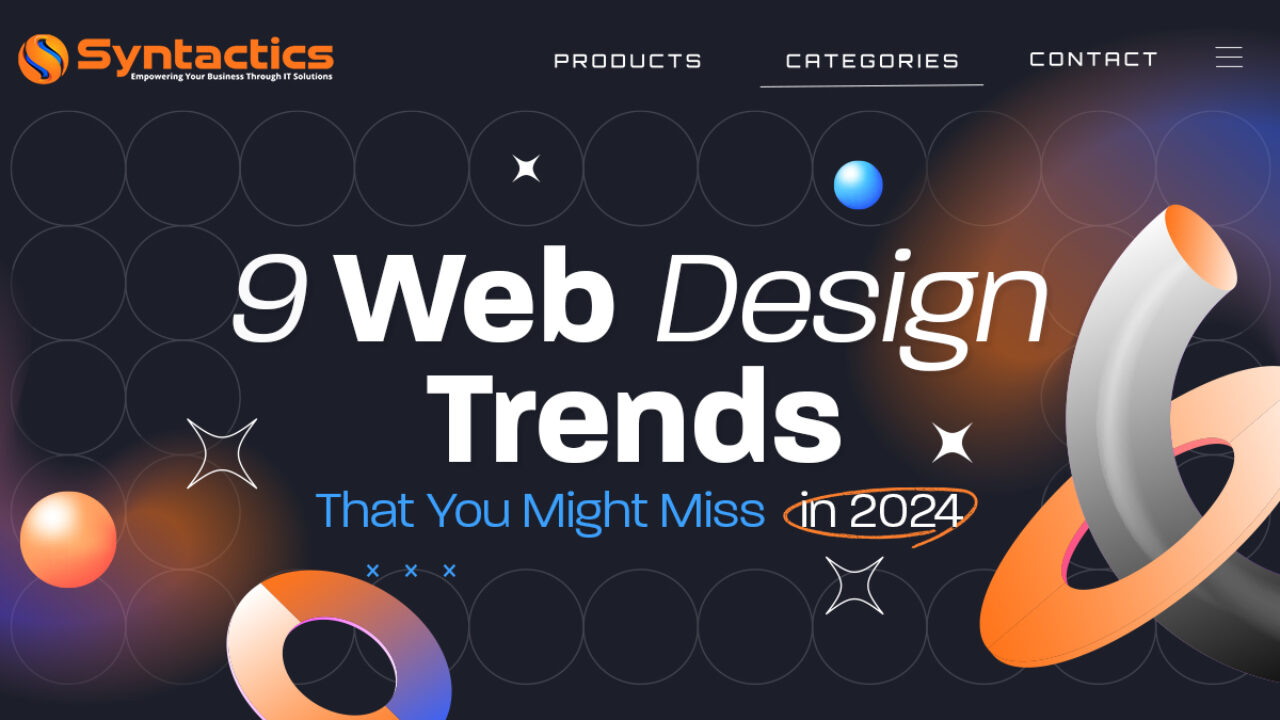Bydly Insights
Explore the latest news, trends, and insights across various topics.
Web Design Trends That Will Make Your Website Pop
Discover the hottest web design trends that will transform your site and captivate your audience—don't miss out on making your website shine!
10 Emerging Web Design Trends That Will Transform Your Online Presence
In the fast-evolving realm of digital aesthetics, emerging web design trends are vital for businesses aiming to enhance their online presence. As technology advances, we see a shift towards minimalistic designs that prioritize user experience. This trend emphasizes simplicity by using fewer elements, allowing for faster loading times and improved accessibility. Additionally, the use of dark mode interfaces continues to rise, not just for aesthetic reasons but also to reduce eye strain for users, providing a more comfortable browsing experience.
Another significant trend is the integration of microinteractions, which enhance user engagement through small, subtle animations or design elements. These elements can guide users smoothly through interactions, such as filling out forms or navigating menus, making the overall experience more intuitive. Furthermore, the adoption of 3D elements and immersive visuals allows designers to create dynamic websites that captivate visitors. With these trends in motion, businesses must adapt to remain competitive in the digital landscape and utilize these innovations to effectively transform their online presence.

How to Use Color and Typography to Make Your Website Stand Out
Color plays a crucial role in web design, as it evokes emotions and guides user behavior. To make your website stand out, choose a color palette that reflects your brand's personality and resonates with your target audience. Use tools like Coolors to create harmonious color schemes. Additionally, employing color psychology can enhance your design; for example, blue often conveys trust, while red can evoke excitement. By strategically using contrasting colors for buttons and calls-to-action, you can increase user engagement and drive conversions.
Alongside color, typography contributes significantly to your website's visual appeal and readability. Select fonts that align with your brand identity and ensure that they are legible across different devices. According to WebFX, a combination of a distinctly styled header font and a clean body text font can enhance the user experience. Don't forget to pay attention to spacing, line height, and font size, as these factors can make your content more inviting and easier to read. Combining well-chosen color schemes and typography can transform your website into a standout digital presence.
What Are the Key Elements of an Engaging and Modern Web Design?
When it comes to web design, the key elements that contribute to an engaging and modern user experience are essential to consider. First, responsive design is a must; it ensures that your website is accessible on various devices, such as smartphones and tablets. Moreover, a clean and intuitive navigation structure helps users find what they need quickly, enhancing their overall experience. Incorporating current design trends can keep your site looking fresh and relevant. Additionally, using high-quality visual elements, like images and videos, can significantly enhance the aesthetics of the site and engage visitors effectively.
Another crucial factor is color psychology, which affects how users perceive your brand. Utilizing a coherent color scheme that resonates with your target audience can evoke emotional responses and create a lasting impression. Alongside, integrating call-to-action (CTA) buttons that stand out but complement the overall design can drive user engagement and conversions. Lastly, prioritizing loading speed is vital; websites that take too long to load can frustrate users and lead to higher bounce rates. For more insights on implementing these principles, check out this usability heuristics.